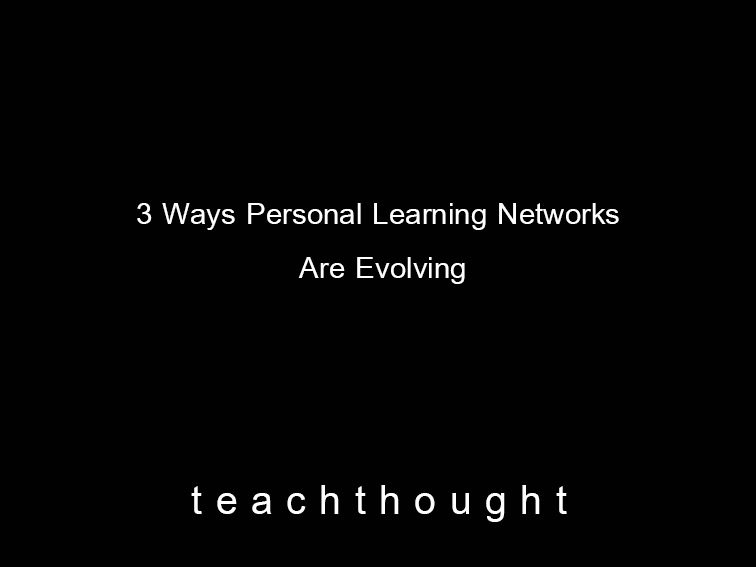
How Personal Learning Networks Are Evolving
by Peps Mccrea, staffrm.io
The notion of a Personal Learning Network (PLN) is a familiar concept these days. Yet, the nature of Personal Learning Networks is evolving as the range of tools available to support them increases, and our rapport with those tools becomes more sophisticated.
The aim of this post is to outline the changes that appear to be taking shape, and to offer some practical strategies for teachers to supercharge their Personal Learning Networks.
Evolution 1: Sharing is becoming more agile
Agile is a concept that has had a significant impact on the software development community. At it’s core, it is about getting products and ideas out quickly, so that their potential value can tested and feedback gathered to improve them. The products and ideas are then iterated and the cycle continues.
A similar phenomenon is beginning to happen in Personal Learning Networks spheres. Educators are shipping their ideas before they are perfect, and encouraging others feedback and build upon those ideas. PLNs are exhibiting a hive mentality with a common purpose at their heart. Making your Personal Learning Networks more agile is a must.
3 Ways to make your PLN more authentic & agile
1. Write shorter posts or otherwise create more shareable content more often
2. Don’t hold back from sharing half-formed ideas; contextualized properly, this is where Personal Learning Networks can hit their sweet spot. It’s also a part of a growth mindset!
3. Build on other peoples ideas and take them in your own direction while communicating who influenced you and how.

Evolution 2: Learning is about challenging yourself
In the past people were content to have a Personal Learning Network that agreed with their views and understood their perspectives. Nowadays, we seeing people follow and interact with those who offer different perspectives and can challenge their viewpoints.
This requires courage, but extending you Personal Learning Network to incorporate people you disagree with will force you to develop a more open mind, and a more robust personal position. In short, it’s a stronger learning experience.
3 Ways to challenge yourself within your PLN
1. Follow people on Twitter who’s ideas you disagree with and don’t always understand
2. Engage in debate, but make sure to go for the ball, not the player
3. Challenge your own assumptions in public
Evolution 3: Personal is becoming professional
In the next few years we’re going to be talking much more about Professional Learning Networks. The differences are subtle yet powerful. One is that professional learning networks are more focussed on the purposes rather than the compositions of their communities. Collaboration is about making change happen at the societal rather than individual rather.
Personal leaning still happens, but as a by-product. Another difference is the role that identity plays in Professional Learning Networks. Educators are finding more sophisticated ways of representing themselves and their reputations online.
3 ways to professionalize your PLN
While a more familiar route may be to personalize your professional learning network, the reverse also applies. Here’s how you can begin to professionalize your Personal Learning Network.
1. Figure out your unique value offering, and build your Personal Learning Network around that
2. Collaborate with others to make change happen as well as share ideas
3. Use multiple platforms to build a richer and more distributed identity.
Pulling It All Together
Personal Learning Networks are here to stay, and they will continue to evolve. The most important thing is to muster to courage to jump it and experiment. Personal Learning Networking is as much about your mindset as it is about the action you take.
What changes have you noticed in Personal Learning Networks? Please share your ideas in the comments – I’d love to know what you think.
